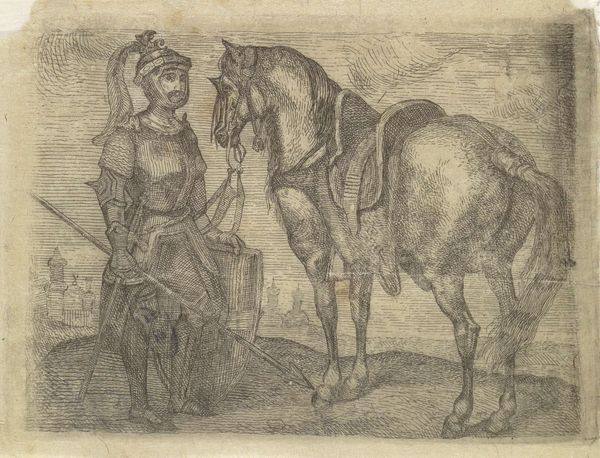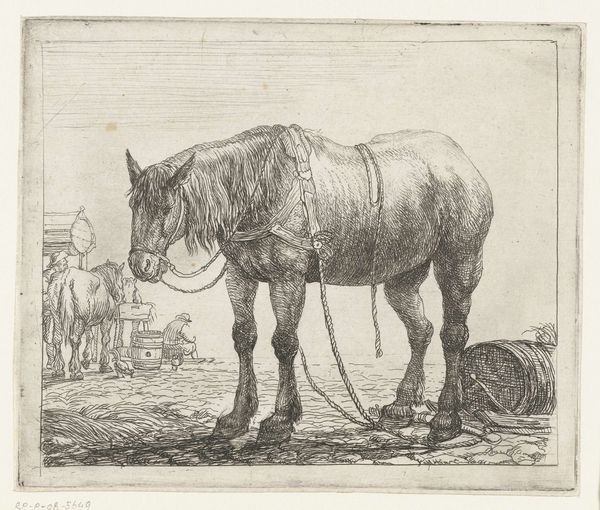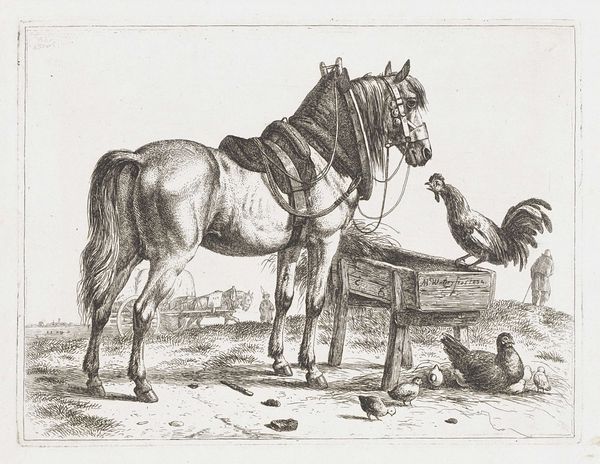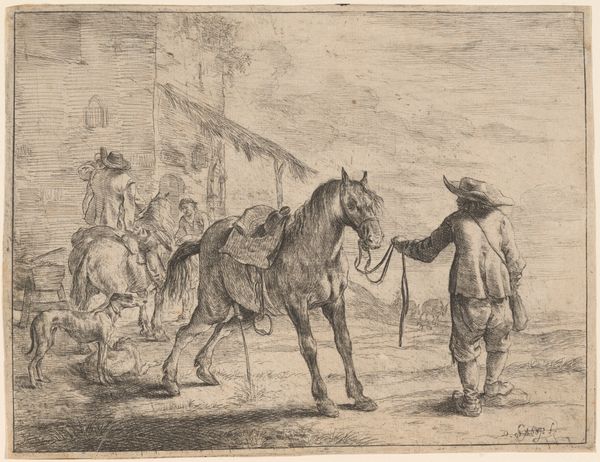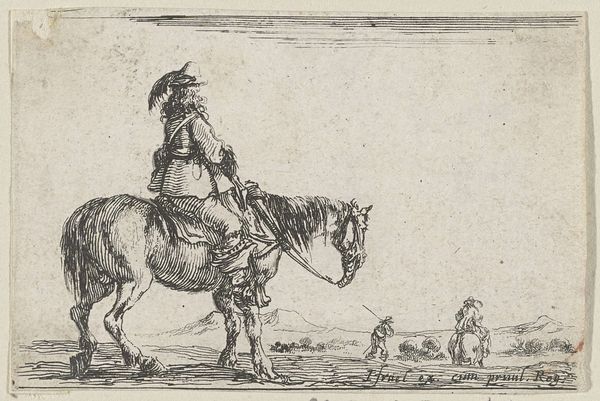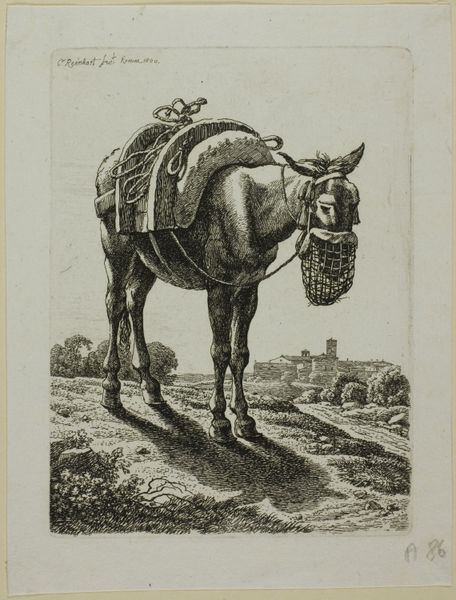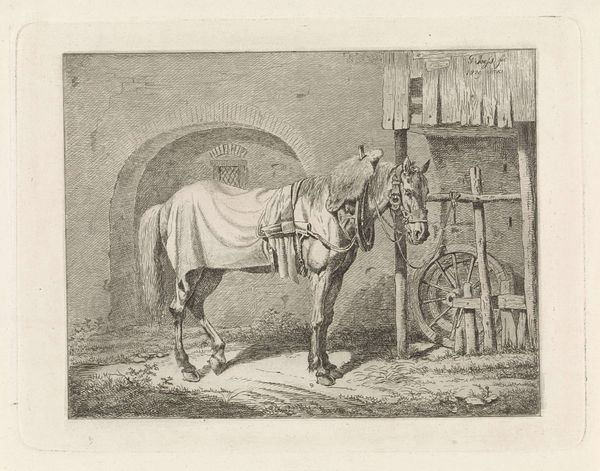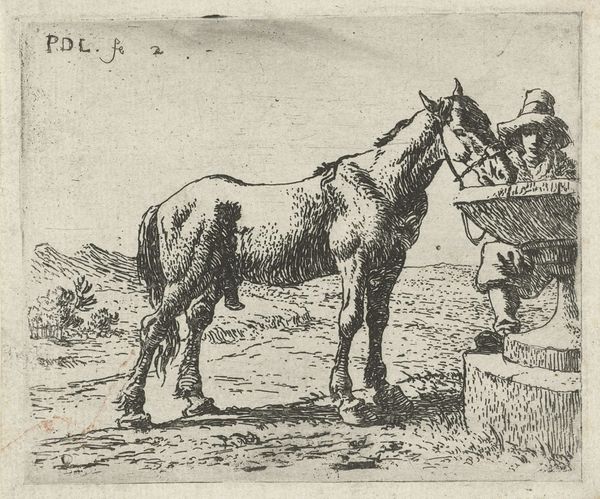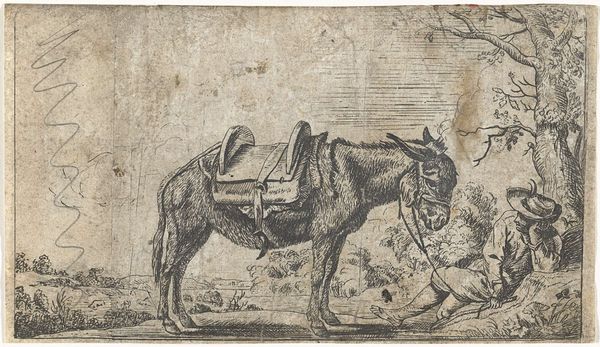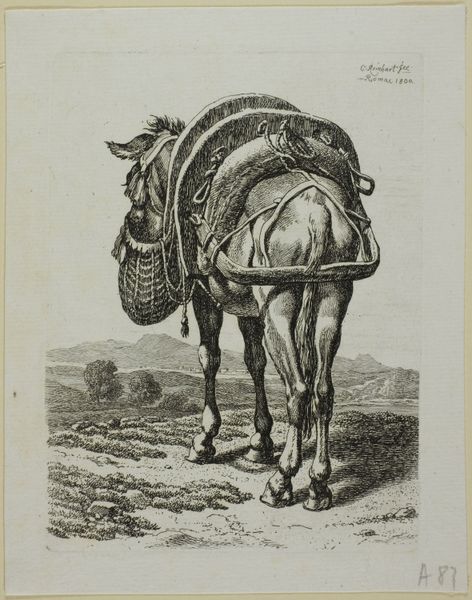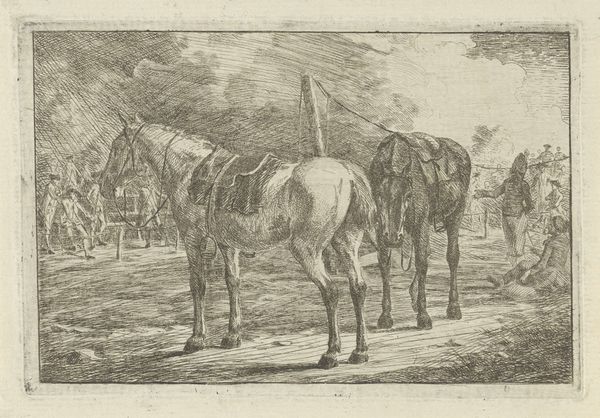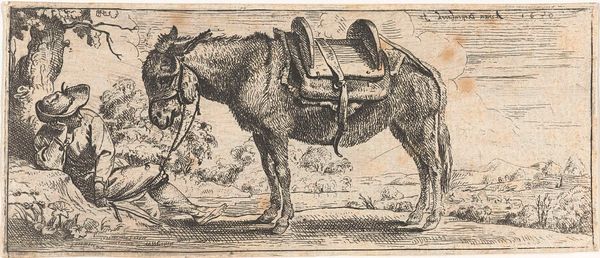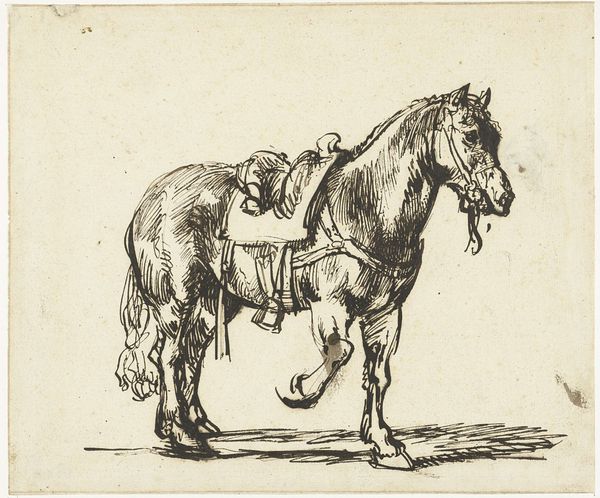
Dimensions: height 94 mm, width 126 mm
Copyright: Rijks Museum: Open Domain
Arnoud Schaepkens made this print of a warrior and his horse using etching, a printmaking technique dating back to the Middle Ages. To create it, the artist would have coated a metal plate with wax, then scratched an image into the wax with a pointed needle, exposing the metal beneath. The plate was then submerged in acid, which bit into the exposed lines, creating grooves. Ink was applied to the plate and then wiped off the surface, leaving ink only in the etched lines. Finally, the plate was pressed onto paper, transferring the image. The distinctive quality of the print comes from the incisive marks left by the needle, and the textures created by the acid. Look at the fine lines indicating the armor, the horse's musculature, and the feathery plume atop the warrior’s helmet. Consider how many hours it must have taken Schaepkens to create this delicate interplay of line and tone. The amount of labor underscores the value that we place on handmade images, even in an age of mechanical reproduction.
Comments
No comments
Be the first to comment and join the conversation on the ultimate creative platform.
